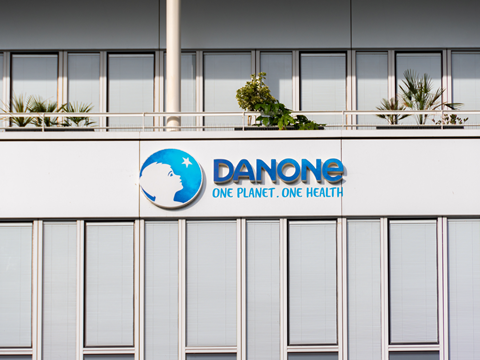
Amidst a lawsuit alleging its failure to record its plastic consumption, Danone has reached an agreement with ClientEarth, Surfrider Foundation Europe and Zero Waste France; now the corporation must publish its use of plastics, strengthen its plastics prevention policy, and attend annual meetings in the coming years.
Back in January 2023, the coalition of NGOs took Danone to court under the allegation that it had violated France’s duty of vigilance law. Companies with over 5,000 employees, or 10,000 in France and foreign subsidiaries, are required to record environmental and social risks in an annual ‘vigilance plan’, yet the NGOs argued that Danone’s did not mention its plastic usage.
The coalition urged Danone to publish a new vigilance plan specifying the presence of plastics across its value chain and activities, and to commit to a plastic reduction trajectory.
Now the Paris Judicial Court has ordered a mediation and the parties have come to an agreement. The coalition has withdrawn its court action against Danone in exchange for the corporation making four ongoing commitments.
The first is to update its vigilance plan to include plastics-related risks. Within this measure, Danone has acknowledged that using plastics, especially in its packaging, will likely pose a salient risk “for water, air, soil, climate, human rights and health”.
It has noted the specific risks associated with sensitive substances in plastics, and claims to monitor scientific developments related to microplastics and their impacts.
Kamila Drzewicka, spokesperson for the NGO coalition, comments: “We now have a vigilance plan that identifies – in our opinion for the first time – in its mapping the risks related to the production and use of certain plastics and additives that are likely, due to the migration of sensitive substances, to generate impacts on human health throughout the life cycle of plastics.”
Furthermore, Danone must strengthen its mitigation and prevention policy regarding plastic usage. In particular, its vigilance plan covers its implementation of reuse solutions in order to limit single-use packaging solutions, especially those made of plastic.
Going forward, it plans to publish consistent information about its bulk and reuse pilots, where they are taking place, and how long they will run. Reduction measures for plastics in packaging, plastic waste management, and specific measures to improve living conditions for collection and recycling workers will also be included.
“Danone’s updated presentation of the risks associated with the use of plastic, which is included in its vigilance plan, represents a significant step forward,” Drzewicka continues. “This is a strong signal sent to the entire agri-food sector.
“However, we remain extremely careful to ensure that companies do not replace plastic with other single-use materials: the implementation of reuse systems and reduction, without substitution, are the best ways to fight against plastic pollution.”
Thirdly, Danone must publish its plastic footprint. Danone is set to utilize the best scientific methods available to estimate the percentage of plastic in its value chain, starting with production and ending at distribution, and make its findings publicly available.
“Two years ago, we noticed that Danone’s strategy, focused exclusively on recycling, was in our opinion inadequate,” says Drzewicka. “To prevent the risks associated with the use of plastic, companies must do everything possible to reduce its use.
“For a company like Danone, where the majority of the plastic identified comes from packaging, this involves the development of bulk and reuse solutions. But only a complete and transparent plastic assessment will make it possible to assess the impact of the group’s actions to deplastify.”
An annual meeting will also be held between Danone and the NGO coalition from 2025 to 2027.
Drzewicka concludes: “We will continue to discuss with Danone and will remain attentive to the ways the company continues to reduce the presence of plastic throughout its value chain and activities, whether in the context of pilot projects in the field of bulk and reuse or in terms of plastic packaging management.”
Sebastien Mabile, lawyer at Seattle Avocats and counsel for the coalition, adds: “This agreement illustrates the potential of the Duty of Vigilance law, as it enables a constructive dialogue between business and civil society to prioritize and mitigate potential risks, but also to prevent harm.”
Earlier this year, ExxonMobil filed a countersuit against California Attorney General Rob Bonta and a non-profit coalition including the Sierra Club, Surfrider Foundation, Heal the Bay, and San Francisco Baykeeper. The original lawsuit alleged that ExxonMobil had violated state laws surrounding false advertising, unfair competition, and water pollution by overstating the effectiveness of its recycling equipment and misleading consumers into buying more plastic.
However, ExxonMobil argued that it was being blamed for state-wide recycling inefficiencies. It says that the Attorney General has worked alongside a legal firm with ties to a competitor’s founder in a targeted defamation campaign.
Meanwhile, Hagens Berman has filed a class-action lawsuit against Procter & Gamble. It says that the environmental claims made on the packaging for its Charmin toilet paper brand cover up the corporation’s ‘widespread deforestation practices’, intentionally tricking consumers with ‘eco-friendly’ buzzwords, a misleading sustainability seal, and more.
If you liked this story, you might also enjoy:
Reuse vs. single use – which is better for the environment?
Sustainable Innovation Report 2025: Current trends and future priorities
What can the world learn from South Korea’s world-leading performance in plastics circularity?

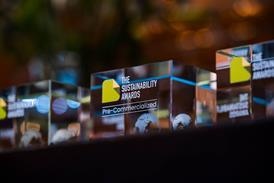

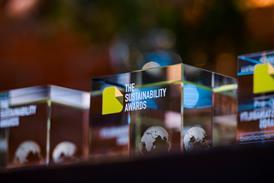
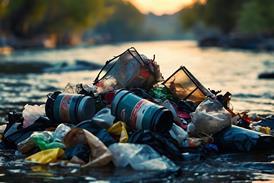
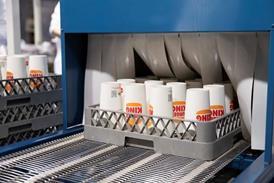














No comments yet